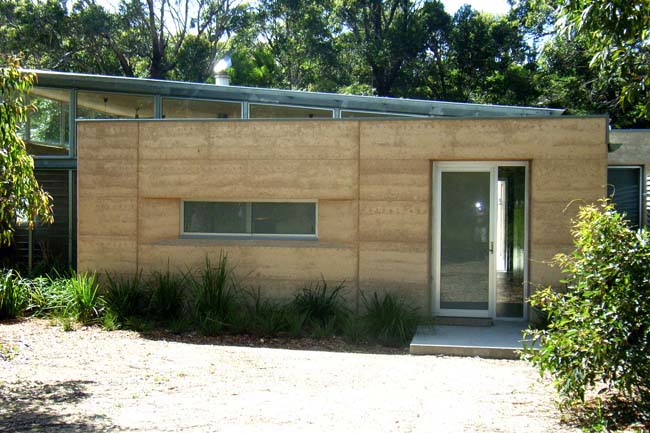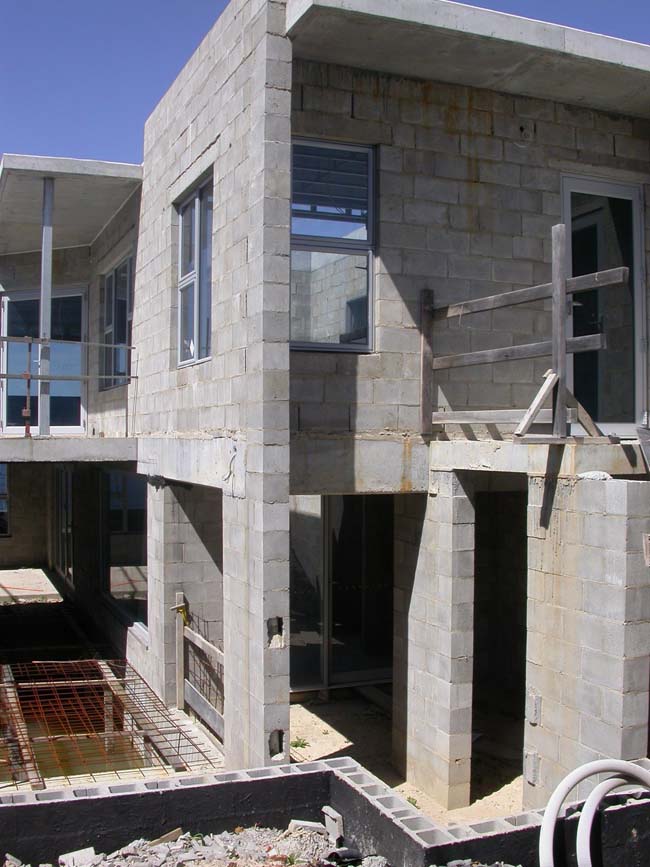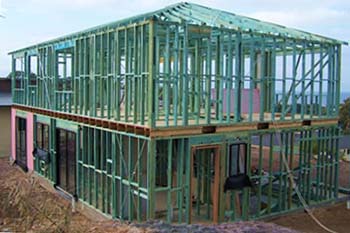Note: Before selecting any structural components for your dwelling it is advised that you consult with a Structural Engineer and a builder. We also recommend you obtain a copy of the book: Acceptable Standards of Domestic Construction.
Once the floor structure is in place the walls are erected directly on top of the chipboard or slab. Walls act as a loading bearing support for the roof and provide space for openings such as doors and windows, and they enclose the house and seal it from weather. Walls comprise of either a structural frame and cladding or solid masonry.
Timber or steel prefabricated frame
This is the most common type of house wall framing.
Steel itself is more termite resistant than timber however timber is more forgiving and accommodates alterations more easily. Timber framing can be pre-treated for termite prevention however the chemicals do weaken in time.
This type of frame is usually pre-made to order. It consists of:
- Plates (horizontal top and bottom members)
- Studs (vertical members between the plates)
- Noggins (additional horizontal members between studs)
- Galvanised strap bracing is added diagonally to brace the frame and stop racking.
Metal angle bracing is essential for structural integrity in walls (as it is for pier areas, floors, and roofs).
Openings in wall frames require a timber, steel or lightweight aluminium overhead beam called a Lintel. Steel frames and load bearing brick walls, although termite resistant, do not accommodate changes easily. Also be aware if you are cutting holes in the framework to accomodate kicthen and bathroom conduit that you will need to follow the latest Australian standard to insure that the framework remains structurally sound.
Post and beam
Post and Beam can be steel or timber. It is used when building elements are to be exposed. Post and beam construction is assembled on site and is in-filled with a timber frame. This method requires more precision and is more labour intensive but can look very good. Often laminated beams of sheets of timber glued together under pressure called "HySpan" (http://www.dindaslew.com.au/?id=7) are used. They are very strong, straight and never warp.
Solid masonry
This includes double brick, core filled concrete block work and natural stone and mud-brick as both a load bearing structure and an outside cladding surface to seal out weather.
With double brick construction both layers of wall are load bearing, all plumbing and lighting conduit should be cattered for during the initial construction period. Altering masonry or brickwork for bathroom and kitchen conduit after this time is labour intensive.
Windows and doors need steel or concrete lintels to support masonry above. In some cases the exterior brick is rendered, bagged or painted. (More about Cement Rendering.)
All masonry walls require damp proofing to stop rising damp creeping up surfaces.
All single skin external walls such as sandstone, core filled concrete block work and mud brick will require a large roof overhang or surface waterproofing to prevent water penetration and or mould build-up.

Insitu formed tinted solid concrete wall construction

Concrete block wall construction
The building process series of articles
This article is one in a series which covers everything from laying the foundations to selecting the finishes. Click on the following link if you would like to learn more about the building process for new houses.

